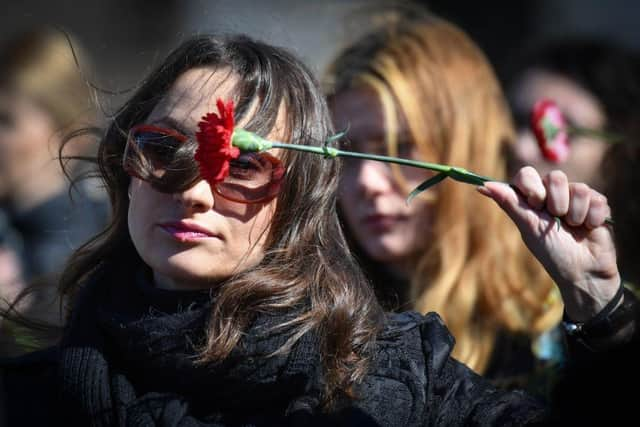International Women’s Day: Policemen handing out flowers and table of cold cuts - how the day was celebrated in post-Communist Romania
It was March 2003 when I walked into the staff room at the Romanian school where I worked to find everyone getting ready for lunch.
It was International Women’s Day and female employees were downing tools for the afternoon to be taken out for a slap-up meal by our (male) head teacher in a nearby restaurant.
Advertisement
Hide AdAdvertisement
Hide AdThe table was filled with cold cuts and we were given the traditional celebratory food of Ciorba de Burta – tripe soup, which is actually far tastier than it sounds. We were all given flowers – some of the students had brought in bouquets for their favourite teachers from home – and even small presents.


Speeches were made, glasses were clinked and we women were celebrated, albeit in a slightly patriarchal kind of way, with the headmaster beaming down on us from the head of the table.
Back then, I had never heard of International Women’s Day. It was barely mentioned here in Scotland and in the days before social media, its popularity overseas had not spread.
In Romania, however, it was as standard as Christmas, Halloween or Valentine’s Day. International Women's Day was a staple holiday of Eastern European communism, a day when bosses would give red flowers to their female employees and even police officers would hand out blooms to female drivers. Ostensibly, it was originally a day to celebrate the achievements of women workers, although over time, it has morphed into a more personal acknowledgement of love and personal relationships.
While friends in Romania tell me the celebrations there have modernised somewhat from the old-school cold cuts and soup lunch, most firms still go all out to honour their female staff.
One friend who works in the IT sector says her office will celebrate on Friday by ordering in cakes and flowers for female staff, while other companies will hold workshops especially for women workers – or host a meal or a party at work.
Although some women still enjoy the fuss, others have begun to rebel against the practice, finding it patronising, especially when the workshops are themed around “women’s interests”, such as craft, or make-up techniques.
In the capital, Bucharest, last year, a few hundred women gathered outside of the Romanian parliament to protest over the right to abortion in the state health system, the availability of which has decreased rapidly in recent years. Previous years have seen protests over domestic violence laws. The move mirrors demonstrations held on International Women’s Day in many countries where women do not feel their rights are being upheld.
Advertisement
Hide AdAdvertisement
Hide AdEmbraced formally by the United Nations in 1975, the official aim is to celebrate women’s rights and how far the world has come in achieving equality. While in the 1970s, a dominating patriarchy existed uncomfortably alongside the bra-burning second wave of feminism, in the 21st century, attitudes have changed dramatically in many countries.
International Women’s Day as a symbol of feminism and female independence is good. Countries just need to ensure that older traditions do not jar in the modern day.
Comments
Want to join the conversation? Please or to comment on this article.
